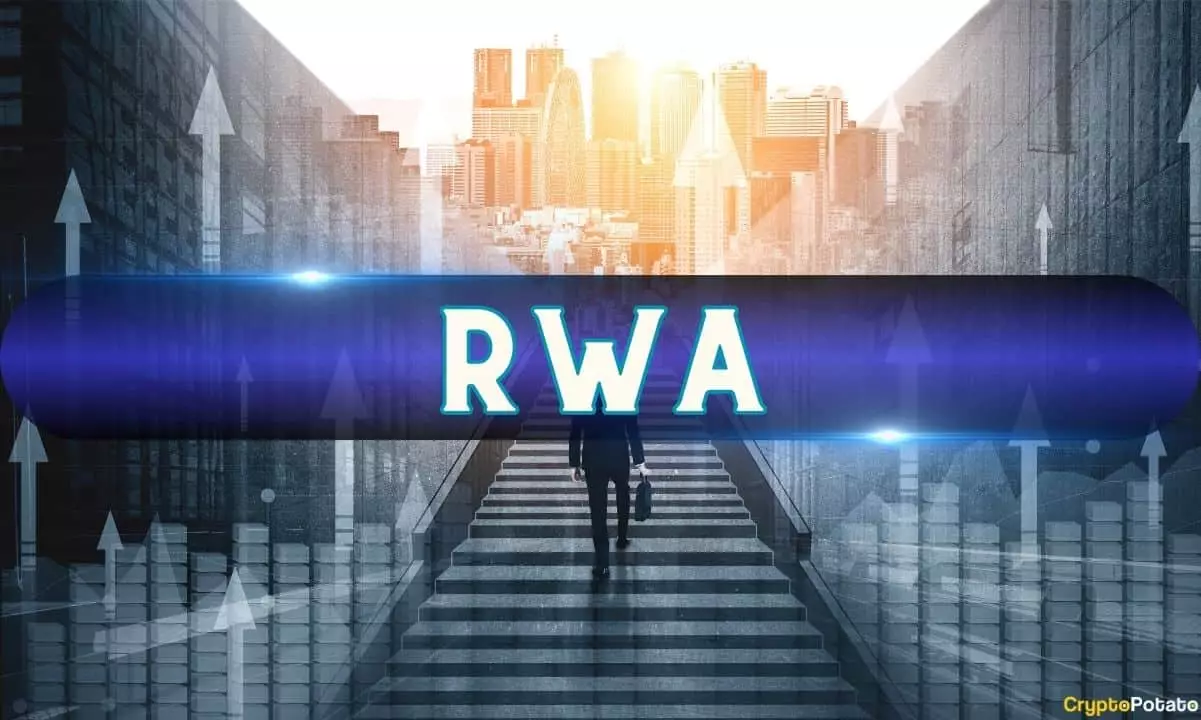In recent years, the realm of Real-World Assets (RWAs) has undergone a dramatic transformation, expanding at an unprecedented rate. Over the last three years, this sector has seen a staggering growth spurt, marking an impressive increase of 58 times its previous valuation. Recent insights from DeFiLlama have brought to light that the total value locked (TVL) in RWAs has reached an all-time high of $8.217 billion, with an astonishing $1 billion surge occurring within the last week alone. This explosive uptrend reflects the burgeoning interest in RWAs and signifies a substantial shift in investment patterns.
Names like Usual and Hashnote have emerged as market leaders in this rapidly evolving landscape, driving much of this growth. Hashnote reported an astounding weekly increase of 65.58%, while Usual recorded a nearly identical rise of 65.65%. These platforms have been at the nexus of innovation within the decentralized finance (DeFi) ecosystem, attracting significant interest from investors. The total value locked for Hashnote now stands at an impressive $1.497 billion, closely followed by Usual at $1.445 billion. Such measurement of growth exemplifies the thriving enthusiasm around digital assets and their traditional counterpoints.
The remarkable performance of Usual is attributed to its recent success in securing $10 million during a Series A funding round led by Binance Labs and Kraken Ventures. Such backing not only leapfrogged the platform into the limelight but also contributed to the soaring value of its governance token, which recently reached a historic high. This surge was further amplified by a controversial incident involving the hacking of Vivek Ramaswamy’s X account, where a fraudulent announcement linked Usual to a fictitious partnership with the U.S. government. This event, while negative in connotation, inadvertently boosted public interest in the stablecoin venture.
In contrast to these top players, platforms like Nest Staking and MatrixDock are also displaying significant growth. Nest Staking saw an increase exceeding 58%, pushing its TVL to $66.24 million, while MatrixDock experienced a rise of 48.18%. Although smaller in scale compared to Usual and Hashnote, these platforms contribute to the diverse portfolio of RWAs, showing that growth is occurring across multiple fronts and not just at the top.
However, not all protocols are witnessing the same upward momentum. Data from DeFiLlama suggests that several projects are grappling with declines. For instance, the Solv Protocol and DigiFT saw noticeable drops, with Danogo suffering the most severe loss—over 15% in a week, translating to a total value locked of $4 million. Moreover, the Maker RWA experienced a staggering 65% decrease over 30 days, marking a critical setback for assets in its custody, which now totals $290.7 million. These fluctuations illustrate the volatility inherent in the RWA space, where market dynamics can shift rapidly, impacting stakeholders substantially.
The burgeoning interest in RWAs also hints at an impending shift in the manner traditional assets are managed and traded. A prime example of this is the recent announcement by players within the Argentine lithium mining sector, who are exploring methods to tokenize this potentially multi-trillion-dollar industry with the assistance of Cardano, a blockchain platform known for its strong focus on scalability and sustainability. Such initiatives underscore the potential of RWAs to redefine investment strategies and provide greater access to liquidity in traditionally illiquid markets.
Financial giants like BlackRock have also entered the fray, lending further legitimacy to RWA tokenization through initiatives like BUIDL. By integrating traditional finance with digital asset management, established players could set the stage for a new era where RWAs become commonplace, offering numerous opportunities for investors and reshaping the financial landscape.
The rise of the Real-World Asset sector is no mere coincidence; it highlights a robust shift within the financial ecosystem. The impressive figures associated with platforms like Usual and Hashnote illustrate a burgeoning investment climate, while challenges faced by several other protocols remind us of the inherent risks. As traditional assets are increasingly tied to blockchain technology, the focus on tokenization not only makes these assets more accessible but also hints at transformative changes within the industry. As the landscape continues to evolve, stakeholders must remain vigilant, embracing innovation while carefully navigating the complexities of this dynamic arena.















